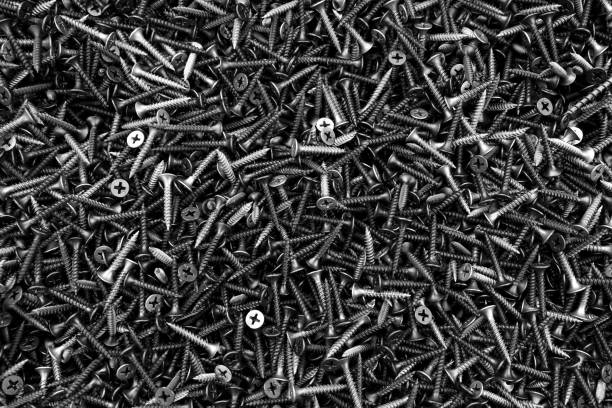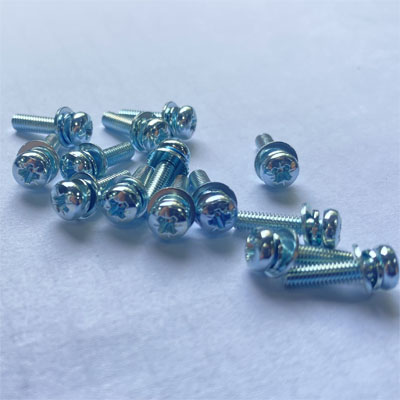caTEGORIES
Tags
Effective Ways to Maintain Drywall Screws in Place

Posted: September 03, 2024
Categories: News
Maintaining drywall screws in place is crucial for ensuring the durability and stability of drywall installations, especially in high-traffic or stress-prone areas. Over time, drywall screws can pop out due to various factors, including changes in humidity, temperature fluctuations, and improper installation techniques. Understanding the best practices for preventing this kind of failure is essential for professionals who deal with construction, renovation, or interior design. This article will delve into understanding the importance of proper screw installation, techniques for securing drywall screws, and the tools that can help maintain their effectiveness.
Understanding the Importance of Proper Screw Installation
A well-executed drywall installation hinges significantly on the proper use of drywall screws. These screws not only hold the drywall in place but also bear the weight of fixtures and finishes that might be added later. If screws are not installed correctly, it can lead to unsightly bulges, cracks, or even structural failures. Thus, it’s vital to emphasize the integrity of screw placement to prevent future issues. By adhering to standard installation practices and selecting the correct screws and anchors, professionals can extend the life of a drywall installation significantly.
The Role of Drywall Screws in Construction
Drywall screws serve as a fundamental element in the construction industry, linking drywall sheets to framing structures such as wooden or metal studs. Their design—often characterized by a sharp tip and coarse threads—enables secure attachment while minimizing damage to the drywall itself. Properly installed drywall screws distribute stress evenly, which greatly reduces the chances of cracking or popping when subjected to environmental shifts. Correct installation is a necessary area of expertise that every construction professional should master.
Common Issues with Drywall Screws
Several common issues can arise with drywall screws, leading to failures and requiring remediation. Screws that are overtightened can cause paper tears on the drywall, compromising its integrity. Conversely, screws that are not tightened sufficiently may loosen over time and become prone to popping out. Additionally, environmental factors such as humidity can exacerbate these problems. Understanding these common pitfalls can aid professionals in diagnosing issues early and implementing solutions before they lead to significant repairs.
Techniques for Securing Drywall Screws
Using Hollow Wall Anchors
Hollow wall anchors are a practical solution for securing drywall screws, especially in lightweight and heavy-duty applications. These anchors are designed to expand behind the wall once they are inserted, creating a firm hold that can bear load without loosening over time. By distributing the weight across a broader surface, they significantly reduce strain on individual screws.
Choosing the Right Size and Length
Selecting the appropriate size and length of hollow wall anchors is crucial for achieving optimal stability. The gauge of the wall anchor should fit the thickness of the drywall and the load it is expected to support. It’s recommended to use anchors that are proportionate to both the drywall thickness and the intended application, ensuring that they embed securely into the framing.
Proper Installation Steps
Installing hollow wall anchors requires specific techniques to ensure functionality. Start by drilling a pilot hole accurately sized for the anchor. Insert the anchor into the wall, and use a screw to tighten it down until the anchor expands firmly against the drywall. This method creates a strong interface between the screw and the wall, preventing movement or loosening over time.
Implementing Toggle Bolts
Toggle bolts are another highly effective option for securing drywall screws, particularly in applications where significant weight is involved. These bolts work by utilizing winged anchors that fold against the bolt, allowing for a larger surface area to distribute weight behind the drywall.
Advantages of Toggle Bolts
The primary advantage of toggle bolts is their ability to hold heavy loads without compromising the drywall’s integrity. This makes them ideal for mounting shelves, mirrors, or other heavy fixtures where standard screws might not suffice. Toggle bolts are resilient and effective in creating a stable hold in hollow walls, ensuring longevity in drywall installations.
Installation Process for Optimal Stability
Installing toggle bolts involves a few specific steps to ensure that they will provide a stable hold. Begin by drilling a hole large enough to accommodate the folded wings of the toggle. Insert the toggle bolt and allow the wings to open up behind the drywall. Tighten the bolt until secure but avoid overtightening, which can damage the drywall.
Selecting Suitable Drywall Anchors
When it comes to securing drywall screws, selecting the right drywall anchors is essential. There are various types of anchors available, and each serves a specific purpose depending on the load requirements and the wall structure.
Differences Between Various Anchor Types
Differences among anchor types—such as plastic anchors, metal anchors, and winged anchors—are noted for their specific applications. Plastic anchors are typically used for lighter loads, while metal and winged anchors offer superior strength and are suited for heavier applications. Understanding these distinctions allows professionals to choose the right anchors based on specific project needs.
Best Practices for Insert and Anchor Usage
To maximize the effectiveness of drywall anchors, several best practices should be considered. Always use anchors that are rated for the weight of the object being hung. Make sure the installation site is clean and free of dust, which could impede adhesion. Following the manufacturer’s instructions for installation can ensure that each anchor achieves its intended purpose without leading to future complications.
For those looking for an extensive range of drywall screws and related products, qewit.co offers a comprehensive online platform providing high-quality materials essential for any construction project. Their expertise and commitment to delivering superior products make them a valuable resource for professionals aiming to maintain integrity and efficiency in their work.

Preventing Overdriving of Screws
Recognizing the Signs of Overdriven Screws
Identifying overdriven screws during drywall installation is crucial to maintain the integrity of the drywall sheets. Signs of overdriven screws include visible dimpling or tears in the drywall surface, where the screw head has penetrated too deeply into the material. Additionally, you may notice cracks forming around the area of the screw, suggesting that the drywall’s structural integrity is compromised. If screws are overtightened, they can strip away the surrounding material, causing a loss of grip and leading to potential future popping as the wall undergoes stress from temperature or humidity changes.
Implications of Driving a Screw Too Far
Driving a screw too far can lead to a range of issues that affect the long-term performance of drywall installations. When screws are overtightened, it can create a slight deformation in the drywall that may cause cosmetic defects, such as bulges or indentations. This not only detracts from the aesthetic appeal but also can impact the overall strength of the installation, leading to higher risks of screws popping out over time. Consequently, excessive driving can also weaken the connection between the screw and the framing, reducing the load-bearing capacity of the drywall and increasing the chances of more significant structural failures down the road.
Practices to avoid overdriving include using a depth-control feature on power drivers and employing manual tightening methods when necessary. By adhering to proper torque specifications and recognizing the signs of overdriven screws early on, professionals can ensure a more robust and resilient drywall installation that can withstand the test of time.
Enhancing Grip with Longer Screws
When to Opt for Longer Drywall Screws
When working with drywall, choosing the right length of screws can significantly impact the overall stability of your installation. Longer drywall screws provide enhanced grip by allowing for deeper penetration into the framing studs, which results in an increased surface area for the screw threads to catch. This is particularly beneficial in situations where the drywall may be subject to movement or stress, as the screws can better withstand the forces acting upon them. Moreover, for thicker drywall or when additional layers are present, longer screws are often necessary to ensure that they anchor securely into the studs behind the drywall.


